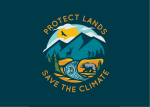
Throughout California, there seems still to be a disturbing number of people, including Sierra Club members, who have never heard of ”30X30” and have no idea what it is about. We hope to help correct that by an ongoing series of short newsletter articles, which we plan to include in upcoming newsletters — at least for the current year
by Vicky Hoover Co-Chair of the 30X30 Statewide Task Force
What IS 30 by 30?
A global movement seeking to conserve 30 percent of lands and coastal waters by the year 2030—or “30 by 30”.
And Why?
Biologists tell us we’re in a global crisis for biodiversity, as countless species of animals and plants could be extinct in 50 to 100 years—unless we drastically change our sprawling land use and protect far more wild habitat; probably at least “Half Earth” is needed as places where nature can dominate. Aiming for 30 percent over the next decade is seen as an achievable “stepping stone” toward an eventual 50 percent—called “Nature Needs Half”. The Sierra Club has joined the global Nature Needs Half initiative.
We need to preserve Nature so that Nature can preserve us – as, truly, Nature is our support system.
California became the first state to adopt “30 by 30” as official state policy, in an October 2020 Executive Order by Governor Gavin Newsom. And in January 2021, a week after his inauguration, President Biden gave a national 30 by 30 executive order—his program is dubbed “America the Beautiful.”
In addition to fighting species extinction, “30 by 30” directly addresses climate change: protecting natural lands enhances the carbon sequestration ability of lands and waters – whether unlogged forests, undisturbed desert soils, grasslands, or marine habitats.
Thus, 30 by 30 connects the fight for biodiversity and the fight to mitigate the climate crisis. Sierra Club volunteers and staff have long pushed both these goals, and now 30 by 30 embraces both and ties them together.
At present some 12 percent of the nation and about 22 percent of California (with more than average protected public lands) is considered “conserved”.
To work with the state of California and assure its new policy will result in real positive action with significant conservation gains, Sierra Club in California set up the “California 30 by 30 task force”—with representatives from most of our Chapters. The Chapters have also identified local places important to them for conservation.
ROLG has submitted ten Land/Water Conservation Priorities (LCPs) to the Sierra Club’s LCP list. They are:
ROLG LCP List 1-10
-
Bodie Hills
-
Conglomerate Mesa
-
Panamint Valley
-
Amargosa Basin
-
Sweetwater Mountains
-
Glass Mountains
-
Solitude Canyon
-
Dunderberg Front Country/Jordan Basin
-
Owens Dry Lake Bed
-
Deep Springs North
In subsequent newsletters we will go through this list one by one highlighting each submission and explaining why it’s on the list and what we hope to accomplish. Please understand that this is not the only list of conservation priorities we will be submitting. We have started a second list of and are in the process of creating a database of all lands and waters in Inyo and Mono Counties that we would like to see eligible for protection, conservation and/or restoration.
Currently four ROLG Executive Committee Members are involved with the Statewide 30X30 Task Force, but I would love to see a local ROLG 30X30 Committee formed. What about you? Get involved in your Chapter by contacting your Chapter’s rep on the statewide 30X30 task force—Janet Barth at janetrbarth@gmail.com or contact Anne Henny or Vicky Hoover, co-chairs of the statewide task force at anneth16@sbcglobal.net or Vicky.hoover@sierraclub.org.
Stay tuned folks this is a big one.
For a more in depth understanding of the need for 30x30, we recommend reading "Half Earth" and "Diversity of Life" by E.O. Wilson.